An instructional design-based educational model for corporate training
An instructional design-based educational model for corporate training
Hello, I'm Yoda of the Tokyo Team! It's autumn, isn't it? Fall is the season for sports events, cultural festivals and other fun events, but this year things have changed with the Corona Vortex. I've heard that many schools have their school festivals online 💦
The environment around us is evolving every day, so let's do our best to keep up and not get left behind! Aside from that, let's get to the meat of this post!
What do you think of when you hear the word "learning"? I think of studying for exams and certifications. Was it an enjoyable learning experience for yourself? In my case, I study out of necessity...Learning is, by nature, fun. To be able to gain knowledge that you don't know and apply it, or to be able to do what you can't do, is growth and joy.
In this article, we're going to introduce you to "Instructional Design". If you're having trouble creating e-learning materials, please take a look at this article!
Content
- 1. what is instructional design?
- 2. why instructional design is getting a lot of attention
- 3. the relationship between e-learning and instructional design
- 4. Summary
What is Instructional Design?

Instructional design is [instructional design studies].Processes to make education and training more effective, efficient and attractive.This refers to the It is a way of thinking to design and develop more effective and efficient learning environments in various situations where education is needed, with the goal of achieving high levels of proficiency and behavioral change in learners. It is called "instructional design" to think of something that cannot be seen by the eye, such as education, as a process and to systematize it.
In order to make learning attractive, it is important to keep the learner motivated to learn, to want to learn more. In Japan, there is a strong tendency to say, "I've learned to do it, but I don't want to do it anymore," which is far from a good enough education.
'You'll not only be able to do it, you'll want to do it more!The design of the training program should be designed to train people with the goal of
Nowadays, the use of ICT has become more and more popular, and learners can receive a variety of information and services via the Internet, using their smartphones, tablets and PCs.
Traditional education has long used a method called "KKD," which stands for "intuition, experience, and courage," which has been used for a long time.However, corporate training that relies on intuition, experience and courage does not necessarily result in high learning outcomes. Even in training for new employees, it is necessary to take a systematic approach to designing and replacing the content of training to achieve high learning effects.
How to capture instructional design learning
The ADDIE Model [Plan-Do-See] A systematic approach to leveraging failure
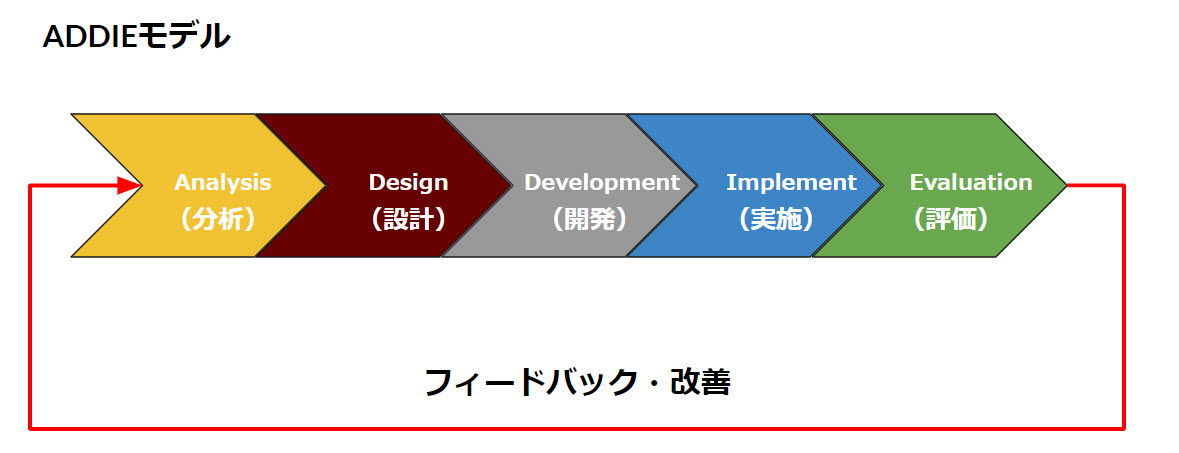
Analysis (analysis): Clarify the learning objectives ⇒ Determine the entrances and exits
Design (designWhat do you teach?
DEvelopment (developmentHow do you teach?
Implement (implementationMaking learning more appealing ⇒ How to motivate students to learn
Evaluationevaluation): Analyze the learning ⇒ Formal evaluation, reflection and improvement
The ADDIE model is an improvement method, such as the PDCA cycle, considered within the framework of education. The important thing here is to have a forward-looking outlook. In other words"Define the goal (learning goal) and reverse order it.The "Plan-Do-See" cycle is the key to designing teaching materials and lessons. The "Plan-Do-See" cycle of "Plan-Do-See" or "Plan-Do-Evaluation" is important in designing teaching materials and lessons.
Create three tests: a prerequisite test (whether you're qualified to learn), a pre-test (whether you need to learn), and a post-test (whether you've reached your learning objectives) to clarify the scope of your responsibilities for the material.
Good material is the material that can be used to achieve a passing standard in a post-test. Find out if the material was too difficult or if they worked on it reluctantly, and always improve (add, cut, move, or change) the material so that they can reach their learning goals.
Click here for a learning support model based on the concept of instructional design.
Ganiye's nine professorial events
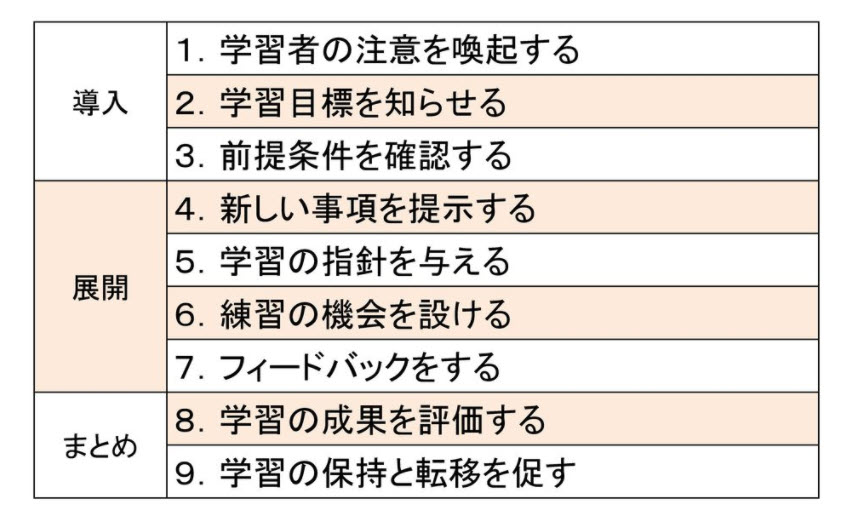
Gagné's Nine Teaching Events is a learning support model proposed by Robert M. Gagné, a learning psychologist who is considered the "Father of Instructional Design Theory". He views the instructional process of structuring lessons and materials as external conditions that work from the outside to support learning, and proposes a set of nine actions.
What it takes for learners to understand what the instructor wants to teach isWorking from the outside to support learning (external conditions)It is It is effective to provide both theoretical and practical support in accordance with Ganye's 9 teaching events. It is about preparing them for new learning, presenting information and learning activities, checking their performance and making sure they do not forget.
Keller's ARCS Motivational Model
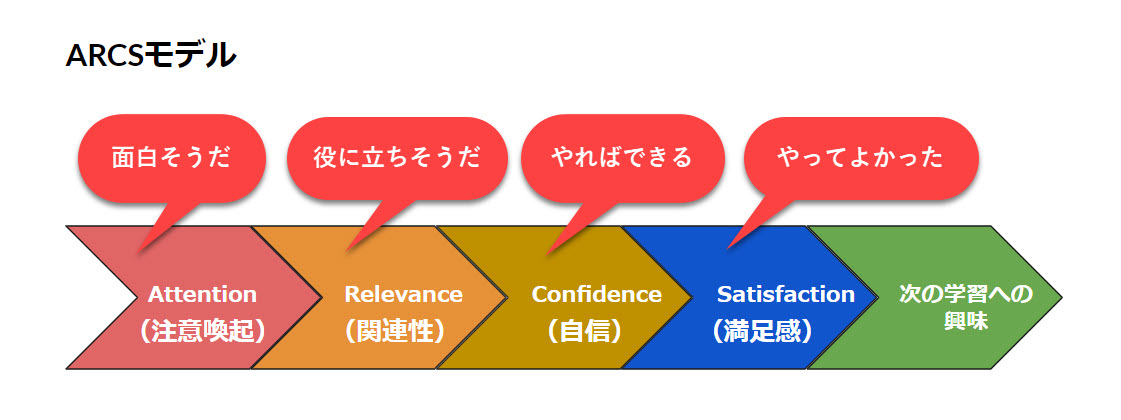
Educational psychologist John Keller proposed this model of motivation to learn in 1983. In order to improve and maintain learner motivation, the ARCS model considers the actions that instructors should take from the four aspects of Attention, Relevance, Confidence, and Satisfaction. The ARCS model helps learners to be confident in their ability to learn independently, as motivation is the driving force of learning.
Why instructional design is getting a lot of attention

Instructional design was originally developed to help the U.S. military train soldiers more effectively. Later, it became popular in the United States and elsewhere as a design method for corporate and higher education. In Japan, one of the reasons for the spread of instructional design was the spread of e-learning around 2000.
When e-learning was introduced, especially for corporate training, instructional design was the focus of attention. In addition to the spread of the Internet, the evolution of devices such as cloud environments, smartphones and tablets has increased the importance and influence of instructional design.
With corporate training rapidly moving online due to the impact of the new coronavirus, there may be many people in charge of human resource development and education managers who are wondering what they should do to rethink and create education.
The relationship between e-learning and instructional design
Since e-learning materials can be used to create learning histories and records, the cycle of 'Analysis -> Design -> Development -> Implementation -> Evaluation -> Analysis' is easy to follow. The concept of instructional design is gaining attention, and this concept is becoming more and more popular in scenes such as corporate training.
learningBOX is an LMS that makes it easy for anyone to start e-learning
learningBOX is a learning management system that includes all the functions necessary for e-learning, such as the creation of teaching materials, questions and tests, grading and grade management.
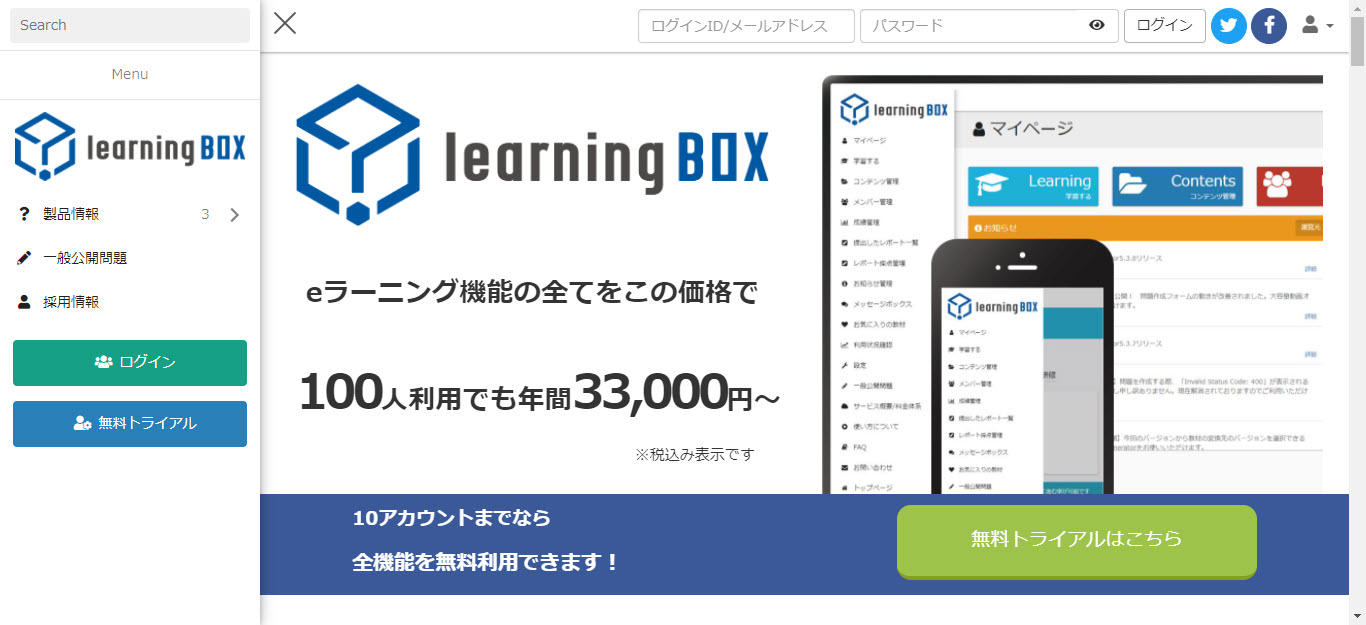
A wide variety of questions and materials can be easily created from a web-based form!
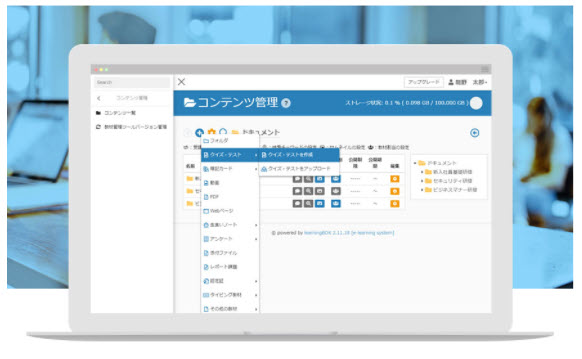
In the content management section, you can create questions and teaching materials and set up distribution of teaching materials to learners. A wide variety of questions and educational materials are available, including web quizzes, web tests, PDF and video postings, and questionnaires. ⇒Features
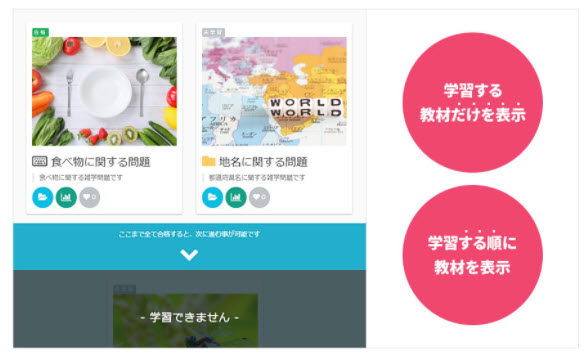
From the "Study" screen, you can study and view materials. The "Learn" screen displays only the materials assigned to the administrator, allowing the learner to work smoothly. ⇒Features of the learning box screen
Individualized monitoring of learners' progress and understanding!
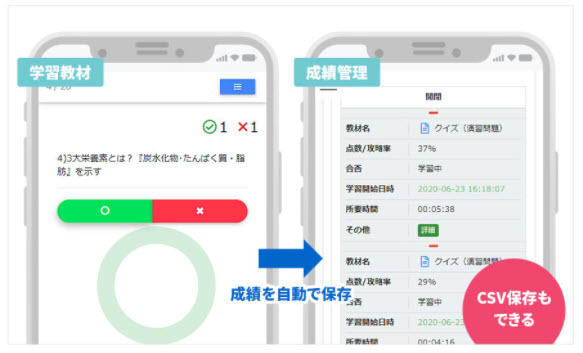
The "Grade Management" is used for "Overall Grade Management" and the "Chart Function" is used for "Student Performance Management and Analysis". Administrators can use these two functions to view the percentage of correct answers for each question and the grades of each student in graphs and tables. ⇒.About managing grades in learningBOX
Summary
In this article, we have given a brief introduction to Instructional Design Theory. We have not been able to introduce you to the subject matter analysis and assessment methods, how to create a teaching material package, and what is academic ability, which we have not been able to do here. These are just a few of the many topics we'd like to explore. If you are interested in instructional design, why don't you pick up a copy of "Instructional Design Manual" by Katsuaki Suzuki of Kitaoji Shobo or "Classroom Design Manual" by Tadashi Inagaki and Katsuaki Suzuki?
LearningBOX doesn't require any computer knowledge! You don't need to be familiar with the system to easily create a substantial internal training tool. We look forward to working with you in the future!
Kitaoji Shobo, A Manual for Designing Teaching Materials: To Support Self-Study, by Katsuaki Suzuki
Kitaoji Shobo, Instructional Design for Teachers, Classroom Design Manual Ver. 2, by Tadashi Inagaki and Katsuaki Suzuki
- learningBOX has been upgraded to version 2.12
- learningBOX is recommended for the Applied Information Technology exam (Fall 2020)!
Comment ( 0 )
Trackbacks are closed.





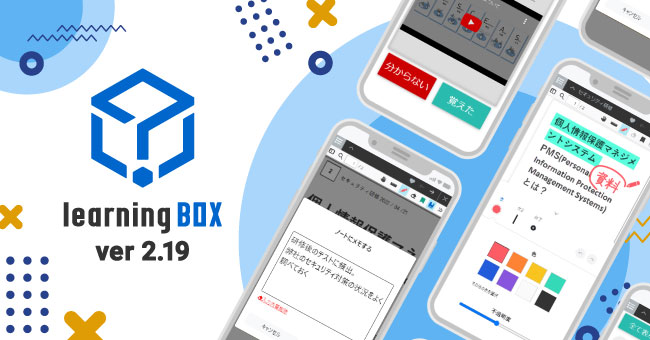

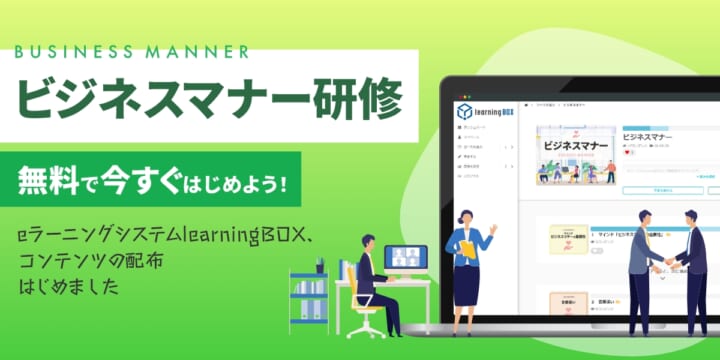
No comments yet.